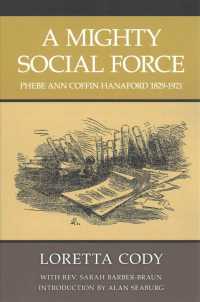Full Description
This volume examines the language of microblogs drawing on the example of a group of eleven users who are united by their interest in ballet as a physical activity and an art form. The book reports on a three and a half year study which complemented a 20,000 word corpus of tweets with semi-structured interviews and participant observation. It deals with two main questions: how users exploit the linguistic resources at their disposal to build a certain identity, and how the community boundaries are performed discursively. The focus is on the speech acts of self-praise and complaint, and on the storytelling practices of microbloggers. The comprehensive treatment of the speech act theory and the social psychological approaches to self-disclosure provides a stepping stone to the analysis of identity work, for which the users draw on two distinctive interpretive repertoires - affiliative and self-promoting.
Contents
1. Acknowledgements; 2. Chapter 1. Introducing the pragmalinguistic approach to the study of Twitter; 3. Chapter 2. Discursive identity: Self and group; 4. Chapter 3. Disclosive speech acts: Self-praise and third party complaints; 5. Chapter 4. Twitter as a communicative environment; 6. Chapter 5. Describing the corpus and the annotation scheme; 7. Chapter 6. Self-disclosure; 8. Chapter 7. Third party complaints; 9. Chapter 8. Narratives in microblogs; 10. Chapter 9. Bringing the findings together: In-group language and interpretive repertoires; 11. Glossary of ballet terms; 12. References; 13. Index





